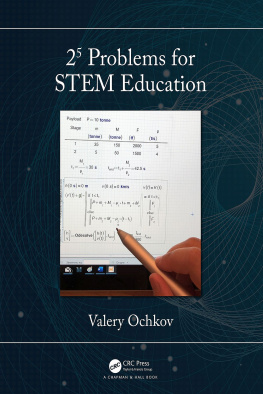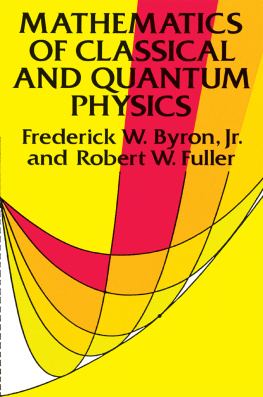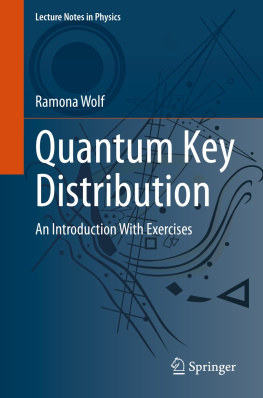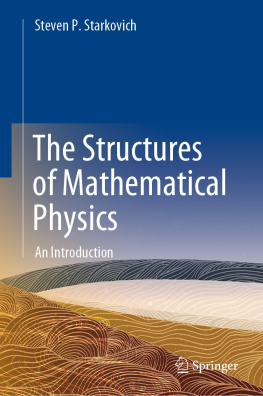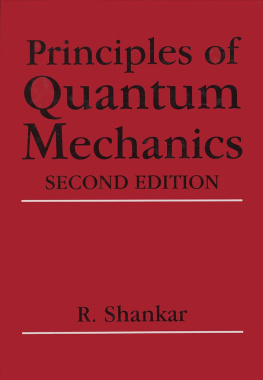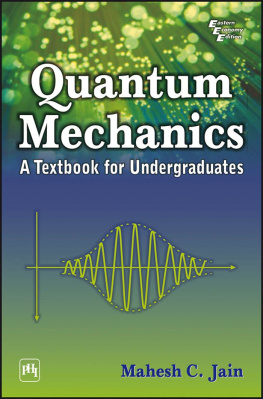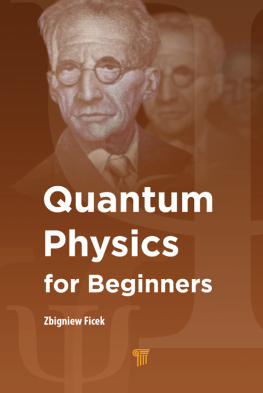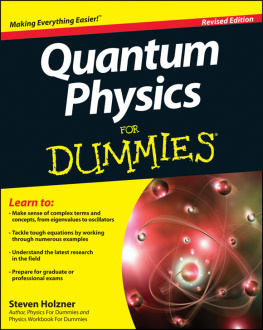The greatest mathematicians,
as Archimedes, Newton, and Gauss,
always united theory and
applications in equal measure.
Felix Klein
This text book is based on my class notes for an introductory quantum theory course attended by advanced undergraduate mathematics students who had no or only very little prior knowledge of physics. However, it is aimed at those from the scientific community, such as advanced undergraduate and graduate students in chemistry, computer science, engineering, mathematics and quantum biology (to name some fields in alphabetic order), who can benefit provided that they arrive with the mathematical portfolio which is described in the following section on Prerequisites. It could serve some of the needs of undergraduate physics students as well. Scientists who have terminated their formal education can also use this book for independent study. And the occasional philosopher may find something of interest, too.
Despite the large number of texts on quantum theory, I could find none attuned to the needs of my students. On the one hand they were not physics students, and so many fine texts were beyond them. On the other hand their mathematics background was minimal, and so slugging through the rigors of functional analysis to do everything right was not an option. Besides, quantum physics as presented here motivates the study of functional analysis and notvice versa. They needed clear explanations that explained. And that is how I got motivated to write this book.
The leitmotif of this book is that students in scientific fields who have enough mathematical knowledge can use that to learn quantum theory by seeing how certain mathematical structures are relevant to quantum physics. These structures include the Schrdinger equation, linear operators acting in a Hilbert space, commutation relations, and representations of Lie groups among others. These topics include most, but not all, of the basic material of an introductory physics quantum mechanics course together with some emphasis on the role that calculations play in providing insight. But even more emphasis is put on the underlying physics ideas and meanings and how the mathematics helps in understanding all that. An important point here is that many aspects of quantum theory are notoriously counter-intuitive, and so the mathematics is an anchor point which allows us to organize our thoughts about quantum theory. So there is an essentialunificationof the physics and its mathematics.
Yet make no mistake! This is primarily a physics book, although written in modern mathematical language, and so the readers kit of mathematical tools will not be prerequisite enough without a healthy dose of interest in physics. Of course, the interest many people have in quantum theory comes from its weird notions and their philosophical consequences. However, I feel strongly that these considerations can not be rationally addressed without first dominating at the very least the physics and mathematics as presented in this book. So another motivation for me was to write down here what I think is the theoretical minimum for understanding quantum theory. But I could well have underestimated; even more may be required.
Also I think that it is important to state ever so clearly that this is not intended to be a text on the mathematical methods used in quantum theory. Of course, such methods can be studied quite independently of any interest in quantum theory itself. But this book is meant to show how the language and the logic of mathematics help us to understand theideasin quantum theory. While at times this objective is not totally distinct from that of a study of mathematical methods, my primary aim is to get a better understanding of the physical ideas that make quantum theory what it is and how those ideas motivate the study of the underlying mathematics. For me quantum theory, such as that of atoms and molecules, motivates the study of the spectral theory of unbounded operators (whatever that is!) and not the other way around. So I feel that the physics should be the starting point, even for mathematicians. And, by the way, this was the historical process, the path traveled by the giants who founded quantum theory. For those interested in mathematical methods in and of themselves there are any number of excellent texts on that important topic.
The organization and emphasis of this book reflect in large part my own path to understanding quantum theory. Since certain topics do not help me or my intuition, I do not emphasize them, though I do try to explain why they are side issues at best for me. But sometimes they appear to me to be unnecessary distractions from the main ideas of quantum theory. This will brand me as a heretic in some eyes. The reader is free to analyze these topics and come to a different conclusion. This is welcome. After all, quantum theory is widely recognized as both a highly successful scientific enterprise as well as a work in progress.
My understanding is that the Schrdinger equation is the central structure in quantum theory in terms of both physics and mathematics. Actually, in the first paper of Schrdinger concerning his eponymous equation there is an idea that I have calledSchrdingers razor. His idea is that a partial differential equationalonetells us what its solutions are and that quantum theory should be based on such a partial differential equation, its solutions and nothing else. Here is an eminent physicist saying that a physical theory should be based strictly on a mathematical foundation.


